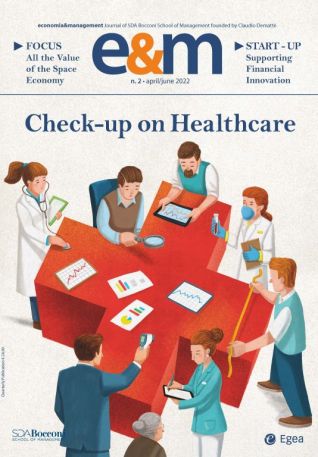E&M
2022/2
Why and how to reduce the large amount of space debris
The increase of the number of space objects in low Earth orbit represents a threat for the long-term sustainability of the space environment, increasing the risk of collision between active satellites and space debris. The lack of a binding regulatory framework allows satellite operators not to take responsibility for maintaining the orbit, thus pursuing interests linked to their business. The model developed by the SEE Lab of SDA Bocconi, in collaboration with the Italian National Research Council (CNR), shows how the role of public institutions could encourage the spread of initiatives to mitigate the risk of collision of space objects through co-financing measures and/or binding regulations. As in the case of initiatives for the mitigation of climate change, public and private actors are beginning to mobilize to reduce the amount of debris present in Earth orbit. The private operators working in that direction consider partnerships with public institutions to be essential to reach long-term sustainability of space activities.




